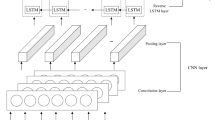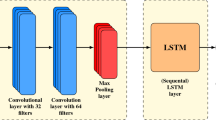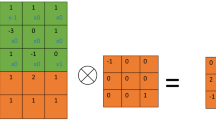Abstract
The analysis on economic data based on time series takes an important position in the field of analysis on time-series data and is also an important task of the field of big data and artificial intelligence. Traditional time-series analysis method is of relatively weak competence in dealing with multi-series analysis. In this research, based on the problem associated with the analysis on time-series economic data, efficient handling method and model are put forward in the face of multi-series analysis task. Also, combined with the association rules, trend correlation and self-trend correlation among multiple series, a trend and correlation deep neural network model (TC-DNM) is established and then tested and verified by using three kinds of economic datasets with representativeness based on the trend analysis task handed by multi-series analysis. The results show that the model proposed in this research is effective than a number of baseline models, can be employed to achieve precision–recall balance and also possesses strong reusability. The two correlation models and joint models in this paper are of peculiarity and innovativeness.
















Similar content being viewed by others
References
Garcia RC, Contreras J, Akkeren MV et al (2005) A GARCH forecasting model to predict day-ahead electricity prices. IEEE Trans Power Syst 20(2):867–874
Zako An FJM (2004) Maximum likelihood estimation of pure GARCH and ARMA-GARCH processes. Bernoulli 10(4):605–637
Portela J, Munoz A, Alonso E (2017) Forecasting functional time series with a new Hilbertian ARMAX model: application to electricity price forecasting. IEEE Trans Power Syst PP(99):1
Agrawal R, Srikant R (1995) Mining sequential patterns. In: Proceeding of the 6th international conference on data engineering, Taipei, 6–10 March 1995, pp 3–14
Kim HY, Won CH (2018) Forecasting the volatility of stock price index: a hybrid model integrating LSTM with multiple GARCH-type models. Expert Syst Appl 103:25–37
Inokuchi A (2000) An apriori-based algorithm for mining frequent substructures from graph data. In: European conference on principles of data mining and knowledge discovery. Springer, Berlin, Heidelberg
Jia Y, Xia G, Fan H, Zhang Q, Li X (2012) An improved apriori algorithm based on association analysis. J Bacteriol 15(15):208–211
Branas CC, Kastanaki AE, Michalodimitrakis M et al (2015) The impact of economic austerity and prosperity events on suicide in Greece: a 30-year interrupted time-series analysis. BMJ Open 5(1):e005619
Lee H, Bogner C, Lee S et al (2016) Crop selection under price and yield fluctuation: analysis of agro-economic time series from South Korea. Agric Syst 148:1–11
Zhao Y, Qi H, Cheng D (2010) Input-state incidence matrix of Boolean control networks and its applications. Syst Control Lett 59(12):767–774
Salzberg SL (1994) Book Review: “C4.5: programs for machine learning” by J. Ross Quinlan. Mach Learn 16(3):235–240
Chauhan H, Chauhan A (2013) Implementation of decision tree algorithm c4.5. Am J Sports Med 39(12):2611–2618
Castán D, Ortega A, Lleida E (2010) Speech/Music classification by using the C4.5 decision tree algorithm. Science 5(7):963–965
Zhang J, Zheng Y, Qi D, Li R, Yi X (2016) DNN-based prediction model for spatio-temporal data. In: ACM sigspatial international conference on advances in geographic information systems. ACM
Teng M, Johnson TD, Nathoo FS (2018) Time series analysis of fMRI data: spatial modelling and Bayesian computation. Stat Med 37(2):2753
Author information
Authors and Affiliations
Corresponding author
Ethics declarations
Conflict of interest
The authors have no competing interests.
Additional information
Publisher's Note
Springer Nature remains neutral with regard to jurisdictional claims in published maps and institutional affiliations.
Rights and permissions
About this article
Cite this article
Wang, W., Li, W. Research on trend analysis method of multi-series economic data based on correlation enhancement of deep learning. Neural Comput & Applic 33, 4815–4831 (2021). https://doi.org/10.1007/s00521-020-05263-1
Received:
Accepted:
Published:
Issue Date:
DOI: https://doi.org/10.1007/s00521-020-05263-1




